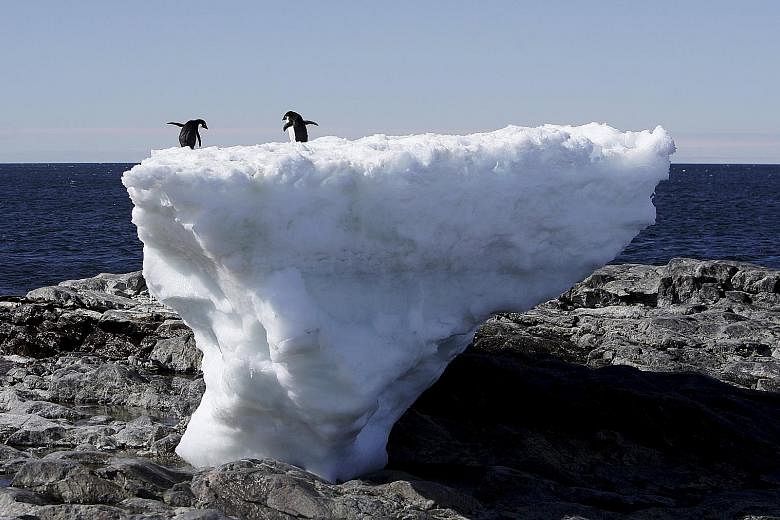PARIS • A rapidly melting glacier atop East Antarctica is on track to lift oceans by at least 2m and could soon pass a "tipping point" of no return, researchers have warned.
To date, scientists have mostly worried about the Greenland and West Antarctic ice sheets as dangerous drivers of sea level rise. But the new study, following up on earlier work by the same team, identified a third major threat to hundreds of millions of people living in coastal areas around the world.
"I predict that before the end of the century, the great global cities of our planet near the sea will have 2m or 3m-high sea defences all around them," said Dr Martin Siegert, co-director of the Grantham Institute and Department of Earth Science and Engineering at Imperial College London, and the study's senior author.
From the air, the contours of Totten Glacier - roughly the size of France - are invisible because the entire Antarctic continent is covered by a seamless, kilometres-thick blanket of snow and ice.
Geologically, however, it is a distinct - and volatile - beast. Last year, Dr Siegert and colleagues revealed that the underbelly of the glacier is being eroded by warm, salty sea water. As this happens, the portion of the glacier resting on water rather than rock increases, accelerating the pace of disintegration.
In the study, published in Nature, researchers found evidence that Totten similarly melted during an earlier period of natural global warming a few million years ago.
"During the Pliocene Epoch, temperatures were 2 deg C higher than they are right now, and carbon dioxide levels in the atmosphere were 400 ppm," or parts per million, Dr Siegert said.
Sea levels during the Pliocene Epoch peaked at levels more than 20m higher than today.
"We are at 400 ppm right now, and if we do nothing about climate change, we're going to get 2 deg C more warming too," he added.
AGENCE FRANCE-PRESSE

